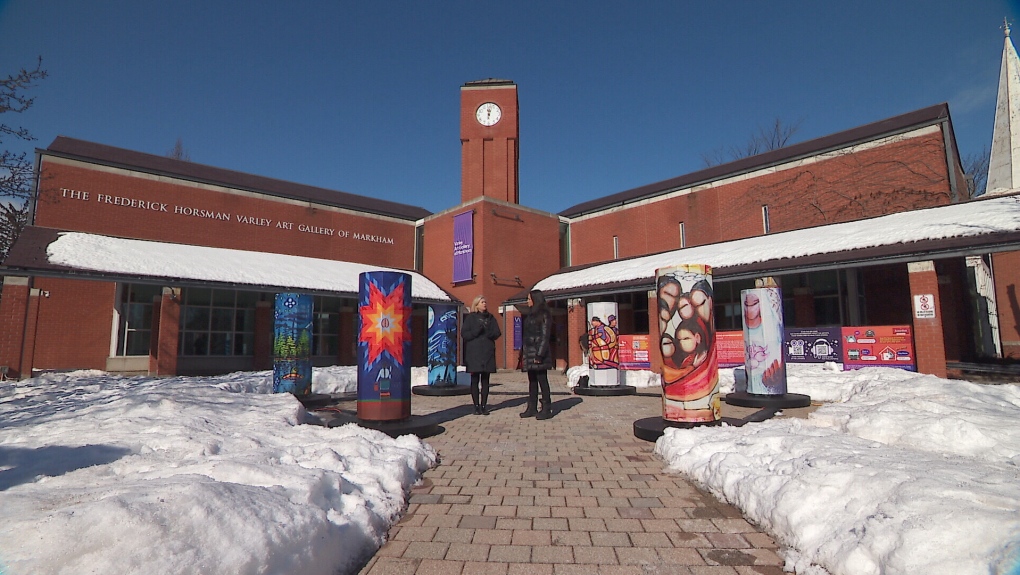An art installation in the Greater Toronto Area is celebrating the Year of the Tiger while bridging cultural divides.
Six lanterns with designs from Indigenous artists are on display outside the Varley Art Gallery in Markham, Ont., marking Lunar New Year with an Indigenous touch.
The art installation was done as a part of LunarFest, organized by the Asian Canadian Special Events Association. The lanterns will be on display until March 6.
"We felt that it was an important link that we're trying to make with the Indigenous community, to help the Asian community learn more about different art forms and different perspectives," association liaison Michael Lin told CTV News.
"Working with Indigenous artists, I think it's a different perspective entirely. There's so much symbolism and meaning behind the different pieces. A lot of strong connections and ties back to family, to nature, the animals," Lin added.
Lanterns are a common sight around Lunar New Year and signify guidance and moving forward in Asian cultures. This year, organizers said they wanted to bring that together with issues of reconciliation and the abuses committed in the residential school system.
"It's a history that, even myself, growing up in Canada, I really didn't learn as much in school. And it's one of those truths in history that people want you to forget, but you really shouldn't," Lin said.
Northern Ontario-based Anishinaabek artist Elliott Doxtater-Wynn was one of the four artists who contributed designs for the lanterns.
"When the Asian society called me and were interested in my work, honestly, first off, I was just like, 'Me? Why?' But then they (said) they were drawn to the style and the language and the literacy that I was bringing through the work," he told CTV News. "So, I felt like it was an easy fit."
Doxtater-Wynn's work, called Bewayzhimaak, represents families coming together to support one another in the face of adversity and features orange shirts -- a symbol used to raise awareness of the abuse in the residential school system.
"(Bewayzhimaak) roughly translates to 'family,' but in Indigenous languages, the language is a little bit more complex than that, and it means to come together as one, like a family grouping," Doxtater-Wynn said.
The cross-cultural connections continue inside the gallery. One side features a painting from renowned Ojibway artist Norval Morriseau. On the other, you'll see empty frames, signifying the important Indigenous artwork missing -- a void that the gallery wants to fill.
"It's very important for us to celebrate and acknowledge artists from all cultures, and it really fits into our mandate, which really is to create critical conversations through art about Canadian art and society," Varley Art Gallery director Niamh O'Laoghaire told CTV News.






































